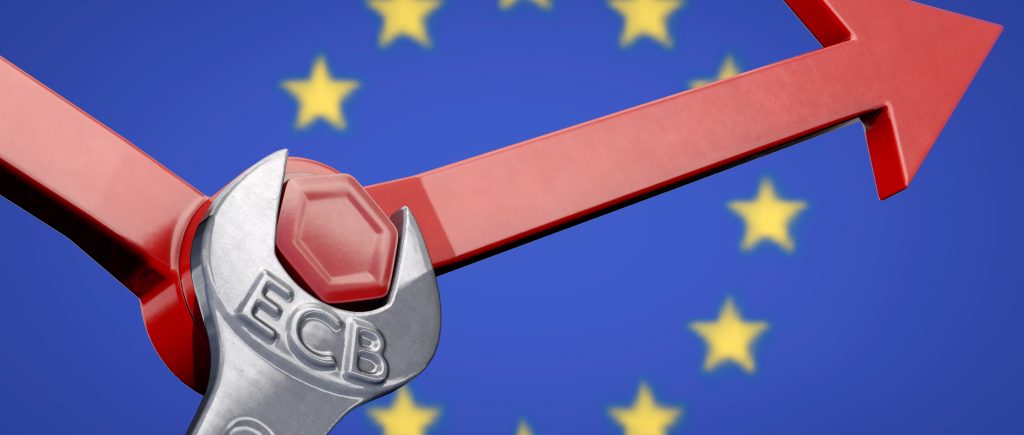For the fourth time this year, the European Central Bank is anticipated to lower its key deposit facility rate by a quarter point, to 3 percent. In order to prevent the Eurozone from slipping into stagnation due to political impasse in France and policy drift in Germany, many also anticipate a shift in tone from President Christine Lagarde, who is expected to boost confidence in additional rate decreases next year. The ECB is expected to cut its key interest rate by 0.25 percentage points to 3.00%. Some analysts suggest a larger 0.5 percentage point cut could be considered.
As it gets ready to reveal its most recent monetary policy stance, the ECB is anticipated to make a significant decision on Thursday. The extent of the rate cut is still up for discussion among experts and watchers, despite the fact that it is generally expected. The ECB is negotiating a challenging economic environment by striking a balance between worries about possible inflationary pressures and the need to promote growth.
A Cautious Approach
A number of factors will come together to affect the ECB’s decision. Even while headline inflation has decreased, there are still underlying price pressures, especially in the services sector. According to the November inflation report, increased food and energy prices caused the annual inflation rate to spike to 2.3%. Additionally, despite its strength, the Eurozone economy still faces formidable challenges. The scenario is made more complex by the unpredictable global economic climate, which includes possible trade disputes and geopolitical threats.
The European Central Bank is probably going to take a cautious stance and decide to gradually lower interest rates. In 2025, a number of modest rate reductions are anticipated to achieve monetary policy neutrality. The goal of this approach is to boost economic growth without making inflationary pressures worse.
Key Considerations
Inflationary Pressures: Core inflation, which reflects underlying pricing pressures, is still high even though headline inflation has decreased. To determine the best course of action, the ECB will need to keep a close eye on these patterns. The central bank might become more hawkish if core inflation continues to increase.
Economic Growth: The third-quarter GDP increase of 0.4% indicates that the Eurozone economy is exhibiting resilience. But the future is still unclear. Growth prospects may be hampered by a decrease in international trade and possible geopolitical threats. The ECB must carefully evaluate how these factors affect the Eurozone economy and modify its policy approach as necessary.
Global Economic Environment: The Eurozone economy may be significantly impacted by the outcome of the U.S. election and possible trade issues. Monetary policy may be further eased if the state of the world economy worsens.
Shifting Focus to Growth
As worries over inflation have subsided, the ECB’s attention has turned to promoting economic expansion. To boost confidence and encourage investment, the central bank is probably going to give more robust indications of upcoming rate reductions. This might entail a departure from the “data-dependency” theory that has guided its most recent policy choices.
Market Expectations
Most market players anticipate a rate drop of 25 basis points. However, if the economic outlook materially worsens, some analysts think a more dramatic 50 basis point decrease would be possible. For hints about the direction of monetary policy in the future, the ECB’s forward guidance will be keenly examined.
What’s Next?
The Eurozone’s economic future will be greatly influenced by the ECB’s policy choices in the upcoming months. The central bank seeks to achieve a balance between promoting growth and preserving price stability by carefully adjusting its monetary policy. The ECB will need to maintain its flexibility and modify its policy position as necessary when the world economy changes.
An important turning point for the Eurozone economy will be the ECB’s next rate decision. Although a rate decrease is generally expected, it is still unclear how much will be cut and where monetary policy will go in the future. In order to maintain sustainable growth and price stability, the central bank will need to carefully consider all of the economic issues.
The euro exchange rate will be significantly impacted by the ECB’s decision as well. The euro might be weakened by a more dovish central bank policy, and it could be strengthened by a more hawkish one. Because it influences the cost of imports and exports, the euro’s exchange rate is a crucial component of the Eurozone economy.

 Noor Trends News, Technical Analysis, Educational Tools and Recommendations
Noor Trends News, Technical Analysis, Educational Tools and Recommendations




